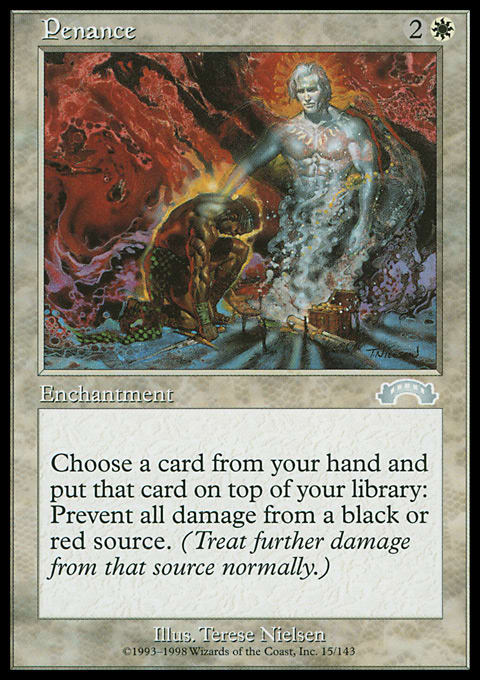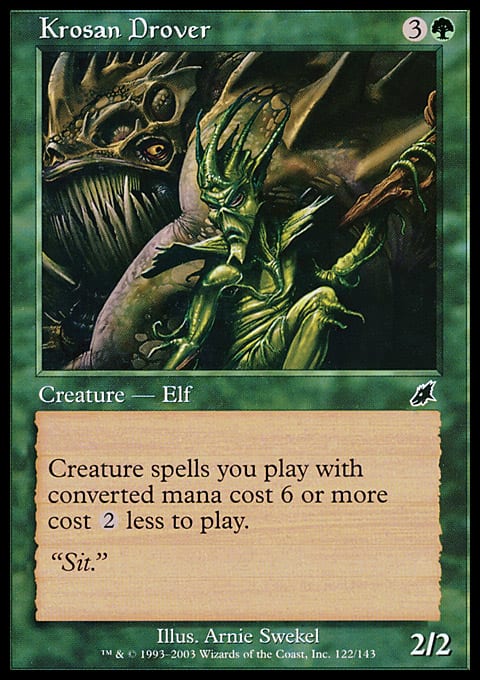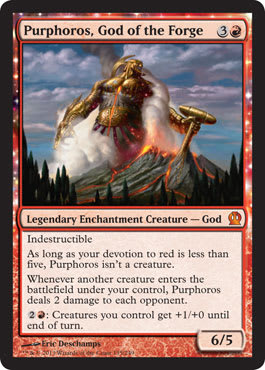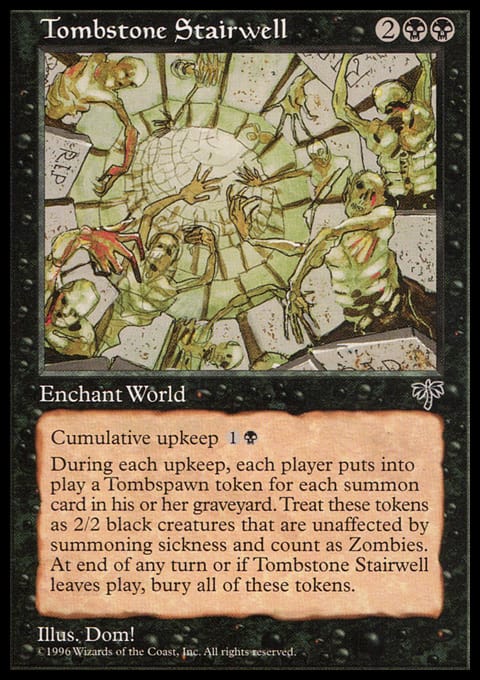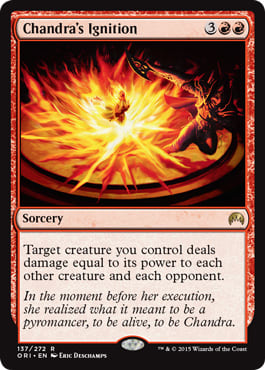When I first started writing for CoolStuffInc.com it was still under the banner of GatheringMagic.com. This was a few years ago, but I remember early on making a mental note that someday I should put together a column outlining what my "Signature Spellbook" might look like.
For three short years, Wizards of the Coast had a product called the "Signature Spellbook" in which they would bundle up eight cards that were considered iconic spells for major characters in Magic's lore. There was a Signature Spellbook for Jace Beleren in 2018 followed up by one for Gideon Jura in 2019 and then Chandra Nalaar in 2020. There wasn't an entry in 2021, though I would have loved to see what a Garruk or Liliana Signature Spellbook might have looked like.
In the years after the first Signature Spellbook, Magic content creators would occasionally take a break from putting together decklists and strategy articles to spend a week navel-gazing and thinking about what their own Signature Spellbook might look like. The estimable Jim Davis shared his own take on this theme back in 2020. You can (and should) read that column here.
I might not have a long list (or any list) of tournament Top 8 finishes to sprinkle across my Signature Spellbook, but I've played a ton of EDH and have plenty of hidden gems and beloved staples to put into my own list.
We've got a brief respite before Kamigawa Neon Dynasty hits with full force, so today I'm going to share with you eight cards that I consider to best represent my own personal journey in Magic the Gathering.
Do you know me well enough to be able to guess any of them?
I sure do love to play the occasional Fog, but which Fog do you think would make it into my Spellbook?
The Commander Caveat
It would be very easy for me to just rattle off eight of my favorite commanders, but I'm going to suggest that the real spirit behind this exercise for an EDH player is to dig deeper than just listing a bunch of decks I've played and loved.
I'm looking to share the cards that have popped up again and again in my years of building Commander decks. It isn't fair to rule out legendary creatures entirely, though. We play with way too many legendary creatures in the 99 (or 98) of our decks to not let them be included in our Spellbooks.
If I did decide to be lazy and just list my most beloved Generals, they would probably be Narset, Enlightened Master, Grumgully, the Generous, Muldrotha, the Gravetide, Lathliss, Dragon Queen, Ramos, Dragon Engine, Jarad, Golgari Lich Lord, Multani, Maro-Sorcerer and Vadrik, Astral Archmage. That list is pretty solid, but it's bound to change as I build new decks and retire old ones.
I could share stories and strategy tips for each of those eight legendary creatures, but my vision for a Commander player's Signature Spellbook goes beyond simply looking at the command zone. With this caveat in place, let's dig into the spells that are iconic to my own experiences exploring the amazing format called Commander.
An Uncommon Gem
When I first got into playing Commander I would spend long hours sifting through the commons and uncommons at a game store in southern New Hampshire called Alpha Titan Gaming. Early on, I had a Mayael the Anima deck and soon found myself building Narset, Enlightened Master. Both commanders care about cards on the top of your library, so when I discovered this first card in the Exodus long box I immediately realized I had uncovered something pretty neat.
This little enchantment lets you put a card from your hand on top of your library at instant speed. The oracle text for Penance clarifies that "the next time a Black or Red source of your choice would deal damage this turn, prevent that damage." That means you don't actually have to have damage on the stack - you can just drop a card onto your library any time you like.
That may sound like an odd little card but when you're about to activate Mayael and you have a big creature in your hand, it's nice to know you can be sure to hit it. I've managed to put multiple extra turns and combat steps onto my library when attacking with Narset and it's hard to not win games when you no longer have those cards stuck in your hand.
I have fond memories of sharing this card with other new Narset players. We've all had that game where cards were stuck in our hands and we flopped into a bunch of lands or spells that didn't help us push for the win. Losing cards from your hand may be card disadvantage, but if you're then casting them for free it's pretty hard to see that as a problem.
Any commander that cares about topdeck manipulation and is in White could probably benefit from running Penance. Yuriko, the Tiger's Shadow can't run it, but Yennett, Cryptic Sovereign sure can.
Every new set brings a chance that we'll see another legendary creature that would love to see you drop some bomb onto the top of your library, so don't forget about this card.
Super Drover
My early deck-building was like many EDH players six or seven years ago. I liked to load up my decks with big creatures and loved to cheat them into play with Mayael activations. That girl could cheat in some real bruisers, but she doesn't stand up well to today's faster decks and heavy interaction.
I always loved stumbling across old cards like Penance, and when I stumbled across this next creature I couldn't help but fall in love.
If reducing the cost of your big creatures by one mana is good, reducing it by two mana is... well... twice as good! Its four-mana casting cost is a bit steep for today's EDH, but any deck in Green that loads up on big creatures should at least take a look at Krosan Drover.
This creature isn't just on my list because it's an odd old card from Scourge that most players haven't heard of. It's also on my list because from the moment I saw it, I couldn't get the idea of a Sesame Street Grover alter out of my mind.
If not for Krosan Drover, I probably wouldn't have spent the last year learning how to alter cards. It's been a great experience and it all started with my need to load up my EDH decks with as many Dad jokes and weird alters as possible.
I still run Krosan Grover... er... Drover in a number of decks and not just because I now have a bunch of them altered. They're a great way to get a high mana commander onto the battlefield a couple of turns earlier and if you're in a casual meta and have a green deck with big creatures, you should definitely give it a look.
Sharing the Love
While I vowed not to fill up this list with legendary creatures, this next entry isn't here for its place in the command zone. It may be a powerful and entertaining commander that puts a target on your back as soon as you start the game, but I've gotten more fun out of playing it in the 99 than as a commander.
Purphoros, God of the Forge will deal 2 damage to each opponent when a creature enters the battlefield under my control. I had a Goblins deck that could really pop off with Purph as the commander and I loved that I was often able to kill a table all at once so nobody had to sit out and wait for the next game.
One of my first "brushes with greatness" came when I submitted a decklist to the CommanderCast podcast back in 2014 when Calvin was still one of the hosts. I had loaded up a Purphoros deck with cards that had the Dash keyword and thought it was just the cleverest thing I had ever done. Much to my surprise, Calvin (aka Captain Red Zone) spent part of an episode talking about the deck. If I remember correctly, he thought the idea was pretty neat. That early recognition that I was capable of coming up with innovative and interesting deck-building ideas was really encouraging and went a long way toward me becoming a content creator for EDH.
I eventually moved on from my Purphoros deck. I didn't love how often I'd wind up playing archenemy, but over the years I kept finding excuses to run him in other decks. I had a Rith, the Awakener deck that ran Purph as a damage outlet when I'd made Saproling tokens and I always seemed to be moving a spare Purphoros from an old deck into a new deck when it made sense to do so. It often made sense. Any deck in Red that can loop a creature or can spam lots of creatures into play can win games with Big Red on the field.
My current favorite deck might be Grumgully, the Generous. It's a Persist combo deck and Purphoros, God of the Forge is an absolute table-killer for a Persist combo build. Because he's a creature I have more ways to tutor for him than for a card like Impact Tremors or Outpost Siege and he's indestructible, so he's not easy to remove.
The Card at the End of the Tunnel
Another card I stumbled upon early in my EDH career came into my life when I tried to build a deck around Mirko Vosk, Mind Drinker. Mirko was the very first commander I built from scratch and because playing mill in EDH is playing on hard mode, I loaded it up with as many mill combos as I could think of.
I set my Mirko deck up to be able to use Mindcrank and Bloodchief Ascension or Duskmantle Guildmage to mill people out. I figured out that I could play Traumatize and then activate Keening Stone to mill someone out. The deck still had a hard time winning games, but my favorite trick of all of them was probably built around this next card.
Tunnel Vision will let you name a card and then target player mills until they hit the named card. When you use Spell Crumple or Hinder to counter a spell, you can put it onto the bottom of their library, setting them up to be hit with Tunnel Vision. I've been killed in lots of horrible and ridiculous ways over the years, but I've also been able to kill a few opponents and win a few games with silly cards and combos, and this is one of the silliest.
My affection for Tunnel Vision is so deep that I once built a deck designed to win off the London Mulligan. If you are allowed to keep six cards and put one card on the bottom of your deck before you even start the game, you are all set to cast Tunnel Vision, name that card, mill your entire deck, cheat Narcomoeba onto the field when it gets milled and then flash back Dread Return to recur Laboratory Maniac or the more recently printed Thassa's Oracle to try to win. I actually pulled that off once, though it took a few turns to get the mana and I had to remember not to trigger any library shuffles before going for the win. It was delightful, but the deck was something of a gimmick deck with the one and only Sivitri Scarzam as the commander and I took it apart soon after it won its only game.
If my love for Tunnel Vision ended there, it probably wouldn't have gotten into this column, but that overcosted sorcery also found a home in an old Lazav, Dimir Mastermind deck and even saw play in one of my current favorite decks: Muldrotha, the Gravetide.
My Muldrotha deck is loaded up with a pretty nice set of combo wincons. Even if I don't know what card is on the bottom of my deck, it can still be a lot of fun to just pick a card that should be in my library and start milling until I hit it. Muldrotha lets me cast a permanent of each type out of my graveyard on each of my turns so if I mill myself even a bit, I'm likely to hit a land drop and maybe even get a trinket or dork onto the field as well.
A Soft Wincon
I might not play much actual cEDH and I might not enjoy the very tippy top of our format's power spectrum, but I've learned a lot from hanging out and playing at an LGS that has some very dedicated cEDH players. One of the things I've picked up from them is that there are soft wincons and there are hard wincons.
As I understand it, a hard wincon simply wins the game right then and there. The aforementioned Thassa's Oracle and Laboratory Maniac are hard wincons. They can be removed or stifled, but they can absolutely, positively, win you the game.
A soft wincon is something like the following card, which is probably the card I most like to name when I'm playing my Muldrotha deck and I cast Tunnel Vision. I love this play so much, I've even taken to calling the deck "Splendid Muldrotha."
This four-mana sorcery simply puts all lands in your graveyard onto the battlefield tapped. Splendid Reclamation isn't some obscure old card nobody has ever heard of, but when I started playing it in Muldrotha, it revitalized my interest in the deck and rapidly became my favorite thing to do.
The only thing more fun than milling half of my library with a Traumatize and then casting Splendid Reclamation is milling half of my library with a Traumatize and then casting Splendid Reclamation with an Amulet of Vigor on the field so they all untap.
The deck is loaded up with actual paths to victory from Protean Hulk lines to Hermit Druid to just hardcasting "Mike and Trike" (Mikaeus, the Unhallowed and Triskelion or Walking Ballista) but the key to unlocking all of them is often using Splendid Reclamation to put a dozen or more lands into play. All that mana lets me deal with having a six-mana commander, possibly having to pay commander tax, and maybe even having to line up a few tutors before I can actually go for the win. It takes mana to try to win more than once and still leave open mana for interaction so you can stop someone else from winning if your first and second attempts get stopped.
Smart Commander players learn not to blow interaction on the little things.
You save your removal and your counterspells for hard wincons because you never want to look back and realize you had removal and wasted it on something that didn't really matter. Splendid Reclamation is the sort of spell that can sometimes fly under that radar. If it resolves and I'm able to untap with all of those lands, I'm very often able to ride all that mana to victory.
Simply put, a soft wincon doesn't win the game right then and there. It puts you so far ahead that your chances of winning the game go way, way up, to the point where you may not be guaranteed the win but your chances of winning are extremely high.
That Card Does What?
I might play with so many staples and "good cards" that they took away my EDH hipster card, but they can't take away my love of playing weird old cards that few newer players have seen before. When I discovered this next enchantment I knew it would scratch that itch for me. Not only is it a fantastic spell in the right situation and for the right deck - it's also one of those cards players will read, scratch their head, read again and then ask if they understand it correctly.
This Mirage enchantment will have each player put a number of Tombspawn Black Zombie creature tokens with haste onto the battlefield equal to the number of creature cards in their graveyard. Those tokens get destroyed (and can't be regenerated) at the beginning of each end step or when Tombstone Stairwell leaves the battlefield.
Finding a weird old card is fun. Finding a weird old card that has incredible synergy with one (or more) of your decks is fantastic. I was able to slot this macabre piece of architecture into not one but two of my Commander decks.
Grismold, the Dreadsower is a Troll Shaman who gives your opponents Plant tokens and gets +1/+1 counters when creature tokens die. If there are even a modest number of creatures in players' graveyards, Grismold is going to see an awful lot of creature token death triggers with Tombstone Stairwell on the battlefield. You can sometimes become a lethal 1-shot kill in just one turn cycle, as this happens for each player (not just the active player) on every player's turn.
The second deck this enchantment found a home in is Thalisse, Reverent Medium. Thalisse will create a 1/1 White Spirit creature token with flying on each end step for each token you created that turn. You might not keep your Tombspawn creature tokens, but those Spirit tokens will stick around and can really pile up.
There are drawbacks to Tombstone Stairwell.
You have to keep track of and pay a cumulative upkeep cost. It's also not just an enchantment - it is a World Enchantment. When a World Enchantment enters the battlefield, any other World Enchantments are put into the graveyard. As I understand it, this "World Rule" can't be circumvented by making Tombstone Stairwell indestructible - it plays like the "Legend Rule." Fortunately, there aren't very many World Enchantments that see play. Concordant Crossroads is probably the most notable one, and that doesn't see a ton of play in casual EDH.
The other drawback to Tombstone Stairwell is simple. If there are opponents with more creatures in their graveyards they'll be getting more Tombspawn creature tokens. Your Spirit tokens might help you overcome a small deficit, but if you put this enchantment into play and the next player suddenly gets a dozen or more of those hasty Tombspawn zombies, they might just use them to attack you.
Quivering with Antici... pation
It's fun to win games "fairly," by which I mean by mashing creatures together like a bunch of neanderthals. Combat is one of the first things we learn when we learn how to play, and there's something refreshing about a deck that genuinely wants to win the old fashioned way.
It's also fun to win games by assembling weird combinations of cards that through their unique interactions will either kill your opponents, remove their libraries, remove YOUR library or nail down the win in some other way.
When doing the latter, I usually have key pieces that simply have to stay on the battlefield for me to be able to win the game. If my sacrifice outlet, my damage source, or some other key permanent gets blown up, I might have to start digging for recursion or a replacement piece to the puzzle I'm trying to put together.
One of my favorite feelings in Commander is the tension that builds up when I realize I have the win on my next turn and all I have to do is get there. If I can make it to my next turn, I win. That feeling is largely made possible by cards like the following equipment.
Conqueror's Flail locks my opponents out of casting spells during my turn. It's not unlike Dragonlord Dromoka or Grand Abolisher, both of which serve a similar purpose in combo decks. When I start to combo off, I never want someone to stop me. I usually have to play out parts of the combo early because a complex puzzle is going to involve lots of pieces and playing those pieces costs mana. Playing them early is risky, as they might get removed, but holding them back isn't always the right play.
Passing the turn after playing out a few parts of a combo and equipping a lockdown piece like Conqueror's Flail sets you up for one of my favorite feelings in EDH.
On each opponent's turn you get to wait and wonder if your opponents suspect that you're about to go off. Will they remove your sacrifice outlet? Do they realize that as soon as you start your turn they're going to lose the game? Do they remember playing this deck before? Is your combo obscure enough that they don't realize how close they all are to losing the game?
You hope other players will play something threatening and someone will have to deal with them. You pray that the mana you left open will successfully bluff the counterspell you may (or may not) be holding in your hand. You know if they all just spend the turn cycle messing with you - either through direct attacks or removing your permanents - you'd either die or get so far behind that you'd be hard pressed to make another push to win.
When that last player passes the turn, that moment when you exhale and realize you got there is a great feeling. You start to do your thing and someone invariably forgot that they were locked out of your turn and you get to remind them that Dromoka, Grand Abolisher or your little Flail says they can't cast spells. Sometimes you'll miss something, like an artifact that activates to exile your graveyard and gets around Conqueror's Flail because it's not a spell.
Even when my carefully laid plans fall apart, I still love the experience of that turn cycle where I know I've got game if only I can get to my next turn.
There are lots of other moments in Commander games that I love, to be sure, but to quote Frankie from Rocky Horror, I love it when I get to "quiver with antici.... pation" in the moments before a win.
The Cherry On Top
If there's a "cherry" on top of my Signature Spellbook, it has to be a card I've learned to love as a final, table killing finisher.
Chandra's Ignition will have target creature you control deal damage equal to its power to each opponent and each creature they control.
I haven't yet stooped to using Chandra's Ignition with Blightsteel Colossus to kill a table, but I do generally pair it with a big creature and an Infect enabler like Phyresis or Tainted Strike. I don't find it sporting to just kill the table with a single Blightsteel and I like to jump through a few hoops before I finish my EDH Sundae and put that cherry on top.
My first big revelation that I might be able to produce really interesting EDH decklists wasn't when I sent in that Purphoros Dash deck to Calvin at the CommanderCast podcast. It was when Ramos, Dragon Engine got spoiled and I was in the process of spending a year blogging to see if I could keep to a weekly writing schedule.
I spent three weeks brainstorming and deck-building, spitting out blog post after blog post exploring various ways to build around that big shiny Dragon. The deck I eventually came up with and kept had a wincon that was something of a Rube Goldberg device. When it started, it wouldn't be clear that the game was going to end, and by the time the process really got rolling it would be too late for the table to stop it.
I'll try to walk you through it as succinctly as I can. You start with Ramos, the tutor Conflux in hand and 10 mana available to you, so this is definitely not an early game play.
You start by casting Conflux to put 5 +1/+1 counters on Ramos and you tutor for Cloudshift, Congregation at Dawn, Maelstrom Wanderer, Phyresis and Chandra's Ignition. You then remove 5 +1/+1 counters from Ramos to make 10 mana.
You then use Cloudshift to flicker Ramos so you can use his mana ability again this turn. You cast Congregation at Dawn, putting Enlisted Wurm, Dragonlord Dromoka and Etherium-Horn Sorcerer on top of your library - though all that really matters is that you get Dromoka and enough creatures to put more counters on Ramos.
You then cast Maelstrom Wanderer, cascading into Dromoka and whatever else you put on top of your library. All of these castings will be putting counters on Ramos and by the time Dromoka has hit the field you're all set to cast Phyresis to give Ramos infect and Chandra's Ignition as the "cherry on top" to kill the table.
I went back to this well when I put together my Codie, Vociferous Codex column last June. It's another overly elaborate combo that requires you to activate Codie, untap him and activate him again to cascade into the only two instants and sorceries in the deck that are under six mana - Tainted Strike and Chandra's Ignition. I haven't yet taken Ramos apart to try out Codie in paper, but I played that list on Tabletop Simulator and it did its thing quite nicely, killing the table with infect damage.
Final Thoughts
Are you wondering where that Fog was that I promised?
I should admit that as much as I love casting Fog spells - I love bluffing that I have a Fog even more.
When you spend a few games throwing around cards like Constant Mists, Arachnogenesis, Darkness and Moment's Peace you can set yourself up for weeks of telling people that if they attack someone else you won't fog their attack. You don't actually have to have a fog in hand, so long as you've recently played the card and you have open mana. Some players will just attack you to force it out of your hand, or ask you to show them the card, but every now and then you can get away with bluffing that spell just by leaving a Green (or Back!) mana open.
If the best fog is the one you use to control an opponent's attack when it isn't even in your hand, I hope you can't blame me for bluffing a fog in today's column. For the record, it would probably be Constant Mists... or Darkness if I'm in black, but only because I have yet to get to cast the Inkshield I recently put into my Thalisse deck.
I hope you enjoyed my walk down memory lane and today's look at what my Signature Spellbook might look like. If I've managed to get you reminiscing - by all means tell me what your own Signature Spellbook would look like in the comments. It should be 8 cards and should probably include every color and at least one colorless spell, but beyond that it should just give us an insight into who you are as a deck-builder and Commander player.
I love navel-gazing as much as the next writer, but I'm going to have to focus on Kamigawa Neon Dynasty in the coming weeks. It's been fun but there are legendary creatures to explore or even break wide open. If you'd like to see my take on any specific commanders, please let me know in the comments.
Thanks for reading and I'll see you next week!

















